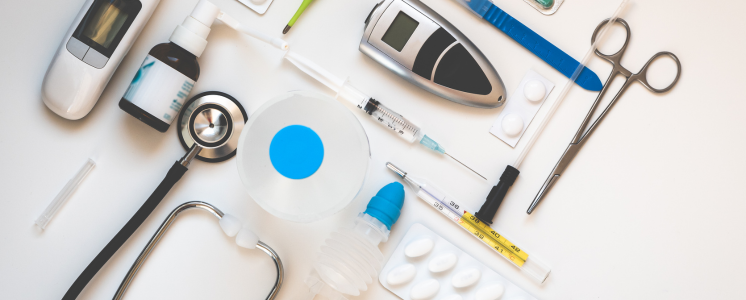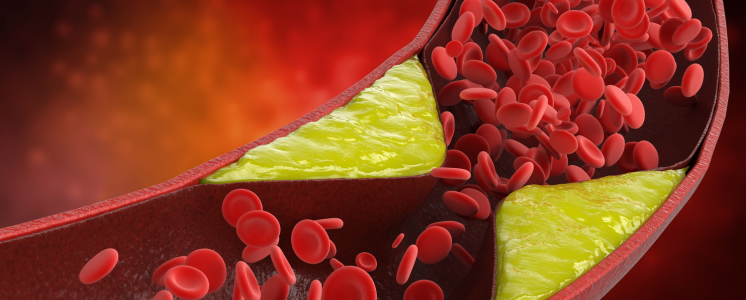
Understanding Erectile Dysfunction Causes & Care
Erectile Dysfunction Causes & Care
Living with erectile dysfunction (ED) can be a challenging experience, affecting not only your physical well-being but also your emotional and mental health. It is essential to understand the underlying causes of ED and explore the available care options to regain your sexual vitality and confidence.
Erectile dysfunction, also known as erectile impotence, refers to the persistent inability to achieve or maintain an erection for satisfactory sexual performance. While it can be distressing, it is important to note that ED is a common condition that can be effectively managed with the right approach.
This article aims to provide you with a comprehensive understanding of the causes of erectile dysfunction and the various treatment options available. By delving into the physical and psychological contributors to ED, exploring lifestyle risk factors, and examining the complex physiology behind erections, we will empower you with the knowledge to make informed decisions about your sexual health.
Additionally, we will discuss the diagnostic procedures used to identify the underlying causes of ED dysfunction and review the traditional treatment options, such as oral medications and non-invasive treatments. We will also explore innovative approaches, including testosterone therapy and surgical solutions, as well as the role of psychological support and therapy in managing ED.
Lastly, we will touch on emerging treatments and research insights in the field of erectile dysfunction, highlighting the exciting possibilities that may shape the future of ED care.
Remember, you are not alone in this journey. By consulting with healthcare professionals, maintaining open communication with your partner, and understanding the multitude of care options available, you can take control of your sexual health and rediscover the red boost that brings joy and fulfillment to your life.
Key Takeaways:
- Erectile dysfunction (ED) is a common and treatable condition.
- Understanding the underlying causes of ED dysfunction is crucial for effective management.
- Physical and psychological factors contribute to ED, necessitating a holistic approach to care.
- Adopting a healthy lifestyle and managing risk factors can help prevent or alleviate ED.
- Various treatment options, including medications, non-invasive treatments, and surgical solutions, are available for ED management.
Introduction to Erectile Impotence and Dysfunction
Erectile impotence, also known as erectile dysfunction (ED), is a common condition that affects many individuals. It refers to the consistent inability to achieve or maintain an erection that is sufficient for a satisfying sexual experience. Erectile dysfunction can have a significant impact on a person's sexual health, intimate relationships, and overall well-being.
Contrary to common misconceptions, erectile dysfunction is not a rare or untreatable condition. It is estimated that over 30 million men in the United States alone experience some form of erectile dysfunction at some point in their lives. The prevalence of ED dysfunction increases with age, but it can affect individuals of all ages.
Understanding and addressing the underlying causes of erectile dysfunction are crucial for effective management. While physical factors play a significant role in ED, it is important to recognize that psychological and emotional factors can also contribute to the condition. By eliminating the stigma surrounding erectile dysfunction and seeking appropriate treatment options, individuals can regain their sexual vitality and improve their quality of life.
Erectile Dysfunction: Definition and Scope
In this section, we will delve into the definition and scope of erectile dysfunction (ED), a common and treatable condition that affects men of all ages. It is important to understand the nature of ED to address it effectively and seek appropriate care.
What is Erectile Dysfunction (ED)?
Erectile dysfunction, also known as ED, is the persistent inability to achieve or maintain an erection sufficient for satisfactory sexual performance. It is a medical condition that can have physical and psychological causes. ED can significantly impact a man's sexual health, relationships, and overall quality of life.
Prevalence and Demographics of ED
Erectile dysfunction is more common than you might think. It affects men of all age groups, although the risk increases with age. According to studies, approximately 30 million men in the United States alone experience some form of erectile dysfunction, and the numbers continue to rise globally.
While age is a significant risk factor, it's essential to note that ED can also occur in younger men due to various causes, such as stress, anxiety, or underlying health conditions. Nevertheless, aging does contribute to an increased prevalence of ED, with studies indicating that over 40% of men over the age of 40 experience some degree of erectile dysfunction.
This widespread prevalence emphasizes the importance of understanding and addressing the issue to provide effective care and support for those affected by ED. By seeking help from healthcare professionals, individuals can explore the available treatment options tailored to their specific needs and regain their sexual vitality and confidence.
Continue reading to explore the various factors contributing to ED dysfunction and the available treatment options to overcome this condition.
Physical and Psychological Contributors to ED
The cause of ED can be a variety of physical and psychological factors. Understanding these contributors is crucial in developing an effective treatment plan. This section will explore the physical and psychological aspects that can contribute to ED dysfunction and highlight their impact on sexual health.
Cardiovascular and Metabolic Factors
Cardiovascular issues, such as heart disease, high blood pressure, and diabetes, can have a significant impact on erectile function. These conditions can affect blood flow and damage blood vessels, making it difficult to achieve and maintain an erection. It is essential to manage these cardiovascular and metabolic risk factors to improve overall sexual health and reduce the risk of ED.

Mental Health and Emotional Well-being
The mind and body are closely interconnected, and psychological factors can play a significant role in the development of erectile dysfunction. Stress, anxiety, depression, and relationship problems can contribute to ED by affecting arousal, desire, and overall sexual satisfaction. It is important to address mental health and emotional well-being alongside physical treatments for a comprehensive approach to managing ED.
By understanding the physical and psychological contributors to ED, individuals and healthcare professionals can work together to develop personalized treatment plans that address the underlying causes. This comprehensive approach can lead to improved sexual function, enhanced well-being, and a renewed sense of confidence.
Lifestyle and Environmental Risk Factors
Erectile dysfunction (ED) can be influenced by various lifestyle and environmental factors. Understanding these risk factors is crucial for maintaining sexual health and preventing the development or progression of ED. By adopting a healthy lifestyle and making conscious choices, individuals can reduce their risk of experiencing erectile problems.
Smoking: Cigarette smoking is a major contributor to ED. The chemicals in tobacco smoke can damage blood vessels and impair blood flow to the penis, leading to difficulties in achieving and maintaining an erection.
Alcohol Use: Excessive alcohol consumption can have a negative impact on sexual function. It can affect hormone levels, impair neurological functions, and cause dehydration, all of which can contribute to ED dysfunction.
Sedentary Lifestyle: Lack of physical activity and a sedentary lifestyle can increase the risk of developing ED. Regular exercise improves blood circulation, promotes the production of hormones, and helps maintain a healthy body weight, all of which are essential for sexual health.
Poor Diet: Unhealthy eating habits, such as a diet high in saturated fats, processed foods, and sugar, can contribute to ED. A diet rich in fruits, vegetables, whole grains, lean proteins, and healthy fats, on the other hand, can improve cardiovascular health and overall well-being, reducing the risk of ED.
Exposure to Environmental Toxins: Certain environmental toxins, such as pesticides, heavy metals, and air pollutants, can impact reproductive health and contribute to the development of ED. Minimizing exposure to these toxins, whether through lifestyle choices or protective measures, is important for maintaining sexual health.
By addressing these lifestyle and environmental risk factors, individuals can reduce their chances of experiencing erectile dysfunction. Making positive changes to daily habits, such as quitting smoking, moderating alcohol consumption, engaging in regular physical activity, maintaining a healthy diet, and minimizing exposure to environmental toxins, can greatly improve sexual health and overall well-being.
Understanding the Complex Physiology Behind Erections
In order to fully grasp the intricate workings of erections, it is important to delve into the complex physiology behind this phenomenon. Several physiological processes play a crucial role in achieving and maintaining an erection, including the role of nitric oxide and blood circulation, as well as the influence of neurological pathways on sexual arousal.
The Role of Nitric Oxide and Blood Circulation
Nitric oxide, a key signaling molecule in the body, plays a vital role in the physiology of erections. When sexual stimulation occurs, nerve signals trigger the release of nitric oxide, which in turn relaxes the smooth muscles in the walls of the blood vessels in the penis. This relaxation allows the blood vessels to expand, facilitating the increased blood flow necessary for an erection.
Healthy blood circulation is crucial for the proper functioning of the erectile tissues. Adequate blood flow ensures that the penis receives sufficient oxygen and nutrients, enabling it to become engorged and achieve a rigid erection. Disruptions in blood circulation, such as those caused by cardiovascular diseases or metabolic disorders, can impede erectile function.
"The role of nitric oxide cannot be overstated in the physiology of erections. It serves as a powerful vasodilator, promoting the relaxation of smooth muscle and the subsequent influx of blood into the penile tissues."
Neurological Pathways and Sexual Arousal
Neurological pathways play a significant role in triggering and maintaining sexual arousal. Stimulation of the nervous system initiates a cascade of events that ultimately lead to an erection. When the brain receives signals indicating sexual interest or desire, it activates specific neural pathways that release neurotransmitters involved in the erectile process.
Neurotransmitters, such as dopamine and serotonin, aid in the communication between nerve cells and are responsible for initiating and sustaining an erection. The release of these neurotransmitters leads to the relaxation of smooth muscles, increased blood flow, and engorgement of the erectile tissues.
It is worth noting that the interplay between the brain, nerves, and reproductive system is intricate and multifaceted. Emotional and psychological factors can also influence neurological pathways, and any disruptions in this delicate balance can affect erectile function.
Understanding the physiology of erections, including the role of nitric oxide, blood circulation, and neurological pathways, provides valuable insights into the mechanisms involved in achieving and maintaining an erection. By comprehending these intricate processes, individuals and healthcare professionals can better navigate the various treatment options available for erectile dysfunction and work towards enhancing sexual health and well-being.
Diagnostics: Identifying the Underlying Causes of ED
Medical History and Physical Exam
When it comes to understanding the specific causes of erectile dysfunction (ED), a thorough diagnostic process is essential. It begins with a comprehensive medical history interview, where healthcare professionals gather information about your overall health, medications, lifestyle factors, and sexual history. This helps uncover potential underlying causes of ED, such as cardiovascular conditions, hormonal imbalances, or psychological factors that may contribute to the condition.
Additionally, a physical exam is conducted to assess any physical abnormalities or signs of underlying health conditions that may be contributing to ED dysfunction. This exam is important in identifying possible anatomical issues, nerve integrity, or signs of cardiovascular disease that may affect blood flow to the penis. Through a combination of medical history and physical examination, healthcare professionals can gather the necessary information to guide your treatment plan.

Advanced Diagnostic Testing for ED
In some cases, additional advanced diagnostic tests may be necessary to pinpoint the specific causes of ED. These tests can provide more detailed information and help healthcare professionals determine the most appropriate treatment approach for each individual.
Some of the advanced diagnostic testing options for ED include:
- Blood tests: These tests can measure hormone levels, such as testosterone, and check for underlying conditions like diabetes or cholesterol abnormalities that may contribute to ED.
- Imaging studies: Imaging techniques like ultrasound or magnetic resonance angiography (MRA) can provide detailed images of blood vessels and help identify any blockages or abnormalities affecting blood flow to the penis.
- Penile Doppler ultrasound: This non-invasive test uses sound waves to evaluate blood flow in the penis and can help diagnose vascular causes of ED.
These advanced diagnostic tests play a crucial role in shedding light on the specific underlying causes of ED, allowing healthcare professionals to tailor an individualized treatment plan that addresses those causes and improves sexual health. Through a combination of medical history, physical examination, and advanced diagnostic testing, the true roots of ED can be identified to ensure the most effective approach to managing the condition.
Review of Traditional ED Treatment Options
In the pursuit of ed remedies and reliable treatments for erectile dysfunction (ED), several traditional options have emerged. These treatments aim to restore sexual function and enhance overall well-being for individuals experiencing ED. In this section, we will explore two popular traditional approaches: oral medications and vacuum erection devices.
Oral Medications , PDE5 Inhibitors and Over the Counter ED Remedies
One of the most common and widely prescribed treatments for ED is the use of oral medications and supplements, specifically phosphodiesterase type 5 (PDE5) inhibitors. These medications work by increasing blood flow to the penis, facilitating the natural process of achieving and maintaining an erection. They achieve this by inhibiting the breakdown of cGMP, a chemical that promotes relaxation of the penile blood vessels.
Popular oral medications in this category include Viagra (sildenafil), Cialis (tadalafil), and Levitra (vardenafil). New to market supplements like VIVE MD Boostaro and Red Boost has shown positive affects amoungst it users. These medications are typically taken orally before sexual activity and have been proven to be effective in a large number of men with ED. VIVE MD Boostaro and Red Boost are the only two recommended here that doesn't require a prescription from a medical doctor.
It is essential to consult with a healthcare professional before starting any medication to ensure suitability, dosage, and potential side effects. Adherence to prescribed guidelines is crucial for optimum results and safety.
Vacuum Erection Devices and Other Non-invasive Treatments
An alternative to oral medications, vacuum erection devices (VEDs) are non-invasive tools designed to create an erection. VEDs work by creating a vacuum around the penis, drawing blood into the erectile tissues and causing an erection. Once the erection is achieved, a constricting ring is placed at the base of the penis to maintain the erection during sexual activity.
Vacuum erection devices offer a non-pharmacological option for individuals who may not be suitable for oral medications or prefer a non-invasive approach. They can be used alongside other ED treatments and have shown good efficacy rates. However, as with any treatment, it is important to follow instructions carefully and consult with a healthcare professional to ensure proper usage and safety.
While oral medications and vacuum erection devices are considered as traditional ED treatments, it is important to note that there are also various other treatment options available, such as penile suppositories, topical creams, and injectable medications. These treatments may be suitable for individuals who have not responded well to oral medications or prefer alternative methods. Consulting with a healthcare professional is crucial in determining the most appropriate treatment option.
Exploring Testosterone Therapy in ED Remedies
For individuals with erectile dysfunction (ED), testosterone therapy can be a potential treatment option to consider. Testosterone, a hormone primarily responsible for male sexual characteristics, plays a crucial role in sexual function. Low testosterone levels can contribute to ED, making hormone replacement therapy an effective remedy to restore hormonal balance and improve sexual function.
Hormone replacement therapy involves the administration of testosterone through various methods, including injections, patches, gels, or pellets placed under the skin. By replenishing testosterone levels, this therapy can enhance libido, increase energy levels, and improve the ability to achieve and maintain erections.
It's essential to consult with a healthcare professional to determine the most suitable testosterone therapy approach for each individual. Dosage, frequency, and administration method may vary depending on individual needs and preferences.
While testosterone therapy can be beneficial for many, it's important to consider potential side effects and risks. These may include acne, fluid retention, increased red blood cell count, and breast enlargement. It's crucial to discuss any concerns or pre-existing medical conditions with a healthcare professional before starting testosterone therapy.
Overall, testosterone therapy offers a promising solution for individuals with ED. By addressing the hormonal imbalances that contribute to erectile dysfunction, this treatment can help restore sexual vitality and improve overall quality of life.
Innovative Approaches: Penile Implants and Surgical Solutions
Types of Penile Implants
Penile implants are an innovative surgical solution for individuals with erectile dysfunction (ED) who have not found success with other treatment options. There are two main types of penile implants: inflatable and semi-rigid.
Inflatable Implants: These implants consist of two cylinders that are surgically placed in the penis. They are filled with a saline solution, allowing the individual to achieve an erection whenever desired. The implant includes a pump located in the scrotum that is used to inflate and deflate the cylinders. Inflatable implants provide the most natural-looking and -feeling erection.
Semi-Rigid Implants: Semi-rigid implants consist of two flexible rods that are surgically inserted into the penis. The rods provide constant firmness, allowing for successful sexual intercourse. While the penis remains in a semi-rigid state, it can be easily positioned for intimacy.
Choosing the right type of penile implant depends on factors such as personal preference, lifestyle, and medical considerations. Consulting with a healthcare professional specializing in erectile dysfunction is crucial for making an informed decision.
Surgical Procedure and Recovery
The surgical procedure for penile implant placement is typically performed under general anesthesia or local anesthesia with sedation. It involves making a small incision in the penis to create a pocket for the implant. The surgeon then inserts the implant and secures it in place.
After the surgery, some temporary discomfort and swelling may occur, which can be managed with pain medications and ice packs. It is important to follow the surgeon's post-operative instructions regarding wound care, physical activity restrictions, and any prescribed medications.
Recovery from penile implant surgery varies for each individual, but most can resume sexual activity after a few weeks. It is important to note that sexual satisfaction and function may improve gradually as the individual becomes accustomed to the implant. Regular follow-up appointments with the healthcare professional are necessary to monitor the healing process and address any concerns.
The Role of Psychological Support and Therapy
Erectile dysfunction (ED) can have both physical and psychological causes, and addressing the psychological aspect alongside medical treatments is crucial for a comprehensive approach to ED care. Psychological support and therapy can play a significant role in managing ED and improving overall well-being.
One form of psychological support for individuals with ED is couples counseling. This type of therapy involves both partners and aims to improve communication, enhance intimacy, and address any relationship issues that may be contributing to the sexual difficulties. By providing a safe and supportive environment, couples counseling can help strengthen the emotional connection and foster a deeper understanding between partners.
Sex therapy is another valuable resource for individuals experiencing ED. This type of therapy focuses specifically on sexual concerns and works to identify and address any psychological or emotional factors that may be inhibiting sexual function. Sex therapists can provide guidance, education, and techniques that can help individuals regain confidence and overcome performance anxiety.
Cognitive-behavioral therapy (CBT) is a widely recognized and effective form of therapy for various psychological conditions, including ED. CBT aims to change negative thought patterns and behaviors that may contribute to ED. By challenging and reframing negative beliefs, individuals can develop healthier perspectives and coping strategies, which can positively impact their sexual experiences.
The combination of medical treatments and psychological support can offer a comprehensive approach to managing ED, addressing both the physical and psychological aspects of the condition. By seeking professional help and exploring the available therapy options, individuals can improve their sexual confidence, strengthen their relationships, and enhance their overall mental well-being.
Emerging Treatments and Research Insight
As the field of erectile dysfunction (ED) treatment continues to evolve, exciting new advancements are emerging that offer hope for those affected by this condition. Two promising treatments that are currently being explored are stem cell therapy and shock wave treatments.
Stem Cell Therapy and Shock Wave Treatments
Stem cell therapy involves the use of stem cells to regenerate and repair damaged tissues in the penis. These stem cells have the potential to enhance blood flow, improve erectile function, and promote the growth of new blood vessels.
Shock wave treatments, on the other hand, utilize low-intensity shock waves to stimulate the growth of new blood vessels and enhance blood flow to the penis. This therapy has shown promising results in improving erectile function and providing long-lasting relief for ED.
Clinical Trials and Future Possibilities
In addition to these emerging treatments, ongoing clinical trials are being conducted to further explore the effectiveness and safety of various ED treatment options. These trials aim to uncover new insights into the underlying causes of ED and develop more targeted therapies.
Looking towards the future, there are exciting possibilities on the horizon. Research in gene therapy and tissue engineering holds promise for revolutionary advancements in ED treatment. By targeting the specific genetic and structural factors contributing to ED, these innovative therapies may provide even more effective and personalized solutions.
While these emerging treatments and future possibilities offer hope for the future of ED treatment, it's important to note that they are still in the research and development stage. It's crucial to stay informed about the latest advancements in ED research and consult with healthcare professionals for guidance when considering experimental treatments.
Conclusion
In conclusion, understanding the causes and care options for erectile dysfunction (ED) is crucial for individuals experiencing this common and treatable condition. By seeking proper diagnosis and exploring available treatment options, individuals can regain their sexual vitality and confidence.
Throughout this article, we have highlighted the importance of open communication with healthcare professionals and partners. This ensures that the underlying causes of ED are addressed effectively, leading to successful outcomes in managing the condition.
From discussing the physical and psychological contributors to ED to exploring traditional and innovative treatment options, it is clear that there are various avenues for managing this condition. Whether it's through oral medications, non-invasive treatments, testosterone therapy, or surgical solutions like penile implants, there are choices to suit different needs and preferences.
Remember, erectile dysfunction is a medical issue that can affect anyone, but it is not something to be ashamed of. By empowering yourself with knowledge and taking proactive steps to seek help, you can overcome ED and reclaim your sexual health. Don't let ED hinder your intimate relationships and overall well-being. Take action today and restore the red boost to your life!
FAQ
What is erectile dysfunction (ED)?
Erectile dysfunction, commonly referred to as ED, is the persistent inability to achieve or maintain an erection for satisfactory sexual performance. It is a medical condition that can have physical and psychological causes.
How common is erectile dysfunction?
Erectile dysfunction can affect men of all ages. It is a widespread issue, with millions of men worldwide experiencing ED. The risk of developing erectile dysfunction increases with age.
What are the physical contributors to erectile dysfunction?
Cardiovascular issues such as heart disease, high blood pressure, and diabetes can contribute to erectile dysfunction. These conditions can disrupt blood flow and damage blood vessels, leading to ED.
Can mental health problems contribute to erectile dysfunction?
Yes, mental health issues such as stress, anxiety, depression, and relationship problems can contribute to erectile dysfunction. It is important to address these psychological factors alongside physical treatments for successful outcomes in managing ED.
What are the lifestyle and environmental risk factors for erectile dysfunction?
Lifestyle factors such as smoking, alcohol use, sedentary lifestyle, poor diet, and exposure to environmental toxins can contribute to the development of erectile dysfunction. Adopting a healthy lifestyle and managing these risk factors is crucial for maintaining sexual health.
What is the role of nitric oxide and blood circulation in achieving an erection?
Nitric oxide plays a crucial role in achieving an erection by relaxing the smooth muscles of the penis and promoting blood flow. Proper blood circulation is essential for the process of achieving and maintaining an erection.
How do neurological pathways contribute to sexual arousal and erections?
Stimulation of the nervous system triggers the release of neurotransmitters that initiate and maintain an erection. There is a complex interplay between the brain, nerves, and reproductive system in the process of achieving an erection.
What is involved in the diagnostic process for erectile dysfunction?
The diagnostic process for erectile dysfunction involves a comprehensive medical history interview and a physical examination. Healthcare professionals gather information about overall health, medications, lifestyle factors, and sexual history to identify potential causes of ED. A physical exam is also conducted to assess physical abnormalities or signs of underlying health conditions.
What are the treatment options for erectile dysfunction?
Oral medications known as PDE5 inhibitors, such as Viagra, Cialis, and Levitra, are commonly prescribed for ED. Over counter supplements VIVE MD Boostaro and Red Boost are commonly used as ED remedies. Vacuum erection devices and penile suppositories are non-invasive treatment options. Testosterone therapy and penile implants are other potential treatments for ED.
How does testosterone therapy help with erectile dysfunction?
Testosterone therapy can help improve sexual function in individuals with low testosterone levels, which can contribute to ED. Hormone replacement therapy can restore hormonal balance and improve sexual function. It is important to consider the potential side effects and consult with a healthcare professional before starting testosterone therapy.
What are the types of penile implants used for erectile dysfunction?
Penile implants can be of different types, including inflatable and semi-rigid implants. These implants are surgically placed and work to achieve and maintain erections. It is important to consult with a healthcare professional to discuss expectations, risks, and benefits before considering penile implant surgery.
How can psychological support and therapy help with erectile dysfunction?
Psychological support and therapy, such as couples counseling, sex therapy, and cognitive-behavioral therapy, can play a significant role in managing ED. Addressing the psychological aspect alongside medical treatments can improve sexual confidence and overall well-being.
What are the emerging treatments for erectile dysfunction?
Emerging treatments such as stem cell therapy and shock wave treatments show promise in regenerating tissues, improving blood flow, and promoting natural erections. Ongoing clinical trials and research efforts are exploring these innovative approaches. It is important to stay informed about advancements in ED treatment and seek professional guidance when considering experimental treatments.
Resource Links
- VIVE MD Boostaro ed Pills Advanced Formula Supplement
- Zdoroviye Nitric Oxide Supplement for Men
- VIVE MD Boostaro Pill Review





